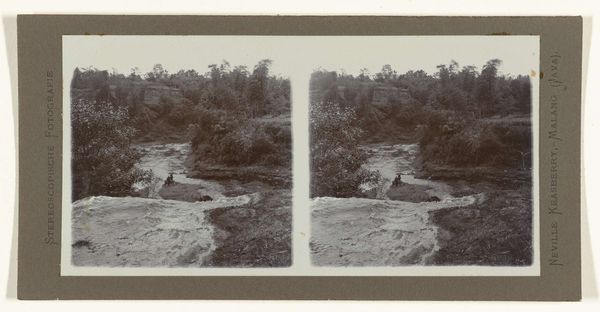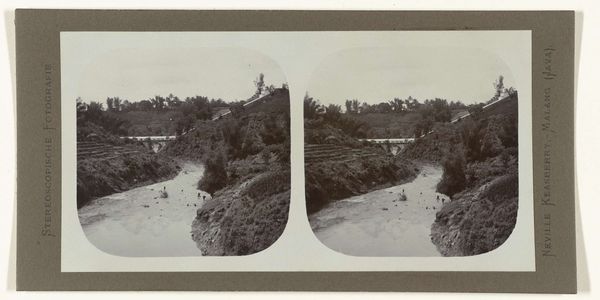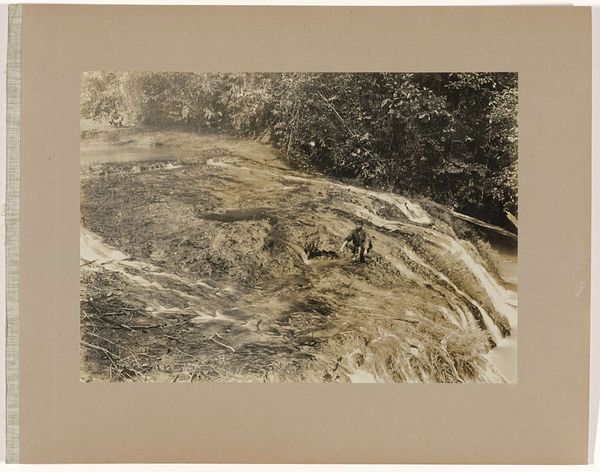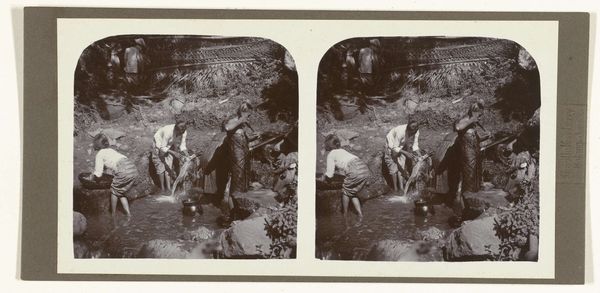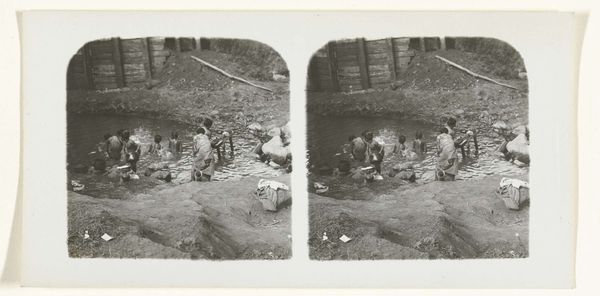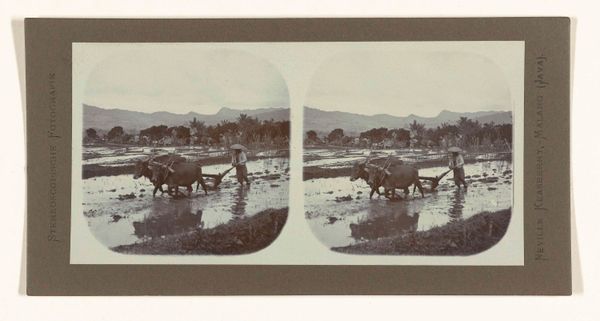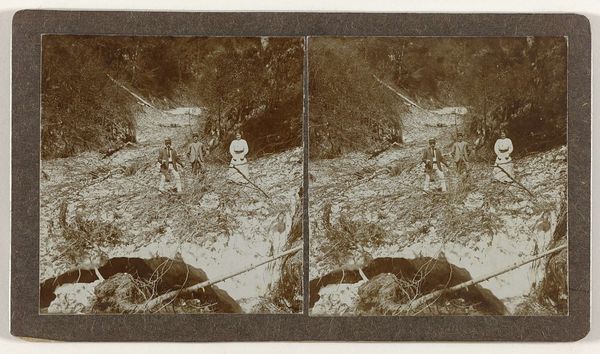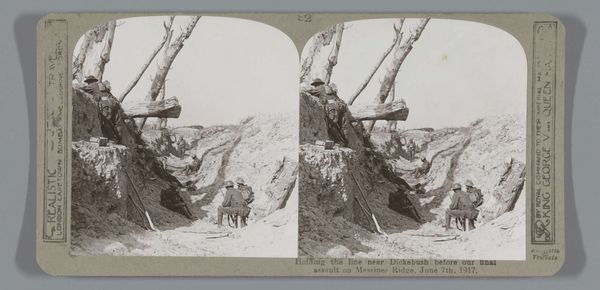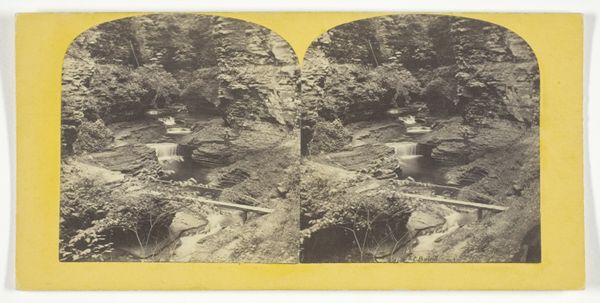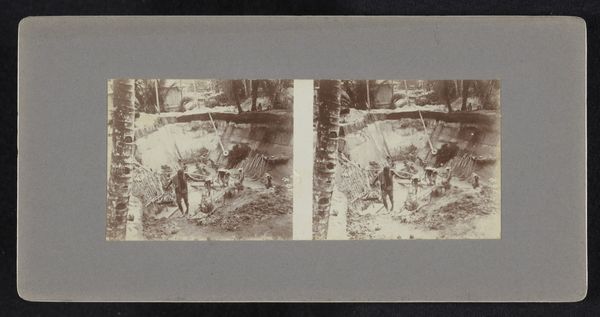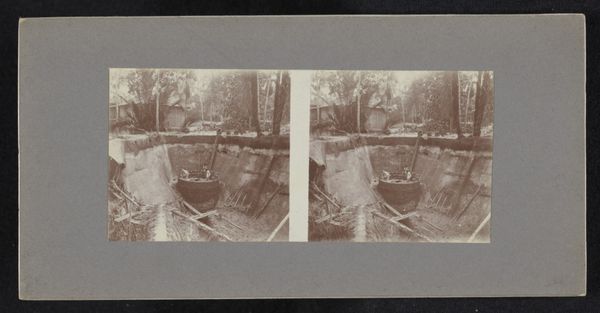
photography
#
pictorialism
#
landscape
#
street-photography
#
photography
#
genre-painting
#
realism
Dimensions: height 76 mm, width 152 mm
Copyright: Rijks Museum: Open Domain
Editor: This photograph by Neville Keasberry, "Jongens in de rivier bij badende karbouwen" or "Boys in the river with bathing carabao," appears to be from somewhere between 1900 and 1935. It has a documentary feel. What do you see in this piece beyond its obvious subject matter? Curator: Well, considering the period, it is crucial to see this through a lens that examines colonial-era representations. Stereoscopic photographs like this were popular forms of visual media distributed in Western markets, offering what were perceived as authentic views of distant lands. Editor: So, it's more than just a simple scene of children and animals? Curator: Exactly. We must question who the audience was, and what expectations they brought to viewing this image. The photographer, Neville Keasberry, was documenting a scene, yes, but also participating in the construction of a narrative about Java for Western consumption. Editor: That makes sense. It feels a bit… voyeuristic now that you mention it. Curator: The composition itself leads us to believe this. The positioning of the photographer creates a sense of observing from a distance, potentially reinforcing a power dynamic. Does it present an idyllic scene, or perhaps one meant to reinforce the exotic ‘other’? How might this photo have shaped Western perceptions of life in Java? Editor: I hadn't thought about it that way. I was initially drawn in by its seemingly candid nature, but now I see how loaded an image like this could be. It definitely offers more than just a snapshot of children and carabao bathing in a river. Curator: Precisely. The photograph operates on multiple levels – as a historical record, a work of art, and as a piece of cultural propaganda, if you will. Reflecting on these aspects enriches our understanding not only of the work but of the power of images to influence societal perspectives.
Comments
No comments
Be the first to comment and join the conversation on the ultimate creative platform.
